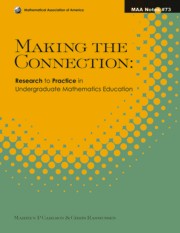1 - On Developing a Rich Conception of Variable
from 1a - Foundations for Beginning Calculus
Summary
Introduction
Have you ever considered that what mathematicians call ‘variable’ is not a mathematically well-defined concept? And that variable can have different meanings in different settings? Unlike the concept of function, for example, variable has no precise mathematical definition. It has come to be a “catch all” term to cover a variety of uses of letters in expressions and equations. As a result, students are often unclear about the different ways letters are used in mathematics.
Later in this chapter, we provide practical suggestions to help students develop a rich conception of variable as called for by the National Council of Teachers of Mathematics (NCTM) in Principles and Standards for School Mathematics (NCTM, 2000). For now, though, let's begin this chapter with some traditional problems that students typically encounter in their high school or college math courses. Work through each problem, and pay attention to the roles that your symbols play during the process of solving them.
Problem 1. Laureen trained for a bicycle race by repeatedly going up and down a hill near her house. Every time she went up the hill, she rode her bike at an average speed of 8 km/h and she rode back down the hill at an average speed of 17 km/h ending at the same spot where she started. One day, she went up and down the hill repeatedly for two and a half hours.
Information
- Type
- Chapter
- Information
- Making the ConnectionResearch and Teaching in Undergraduate Mathematics Education, pp. 3 - 14Publisher: Mathematical Association of AmericaPrint publication year: 2008
Accessibility standard: Unknown
Why this information is here
This section outlines the accessibility features of this content - including support for screen readers, full keyboard navigation and high-contrast display options. This may not be relevant for you.Accessibility Information
- 11
- Cited by
